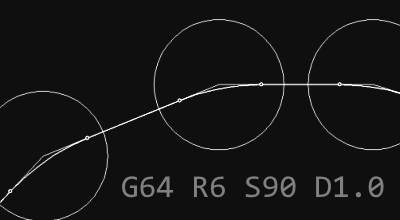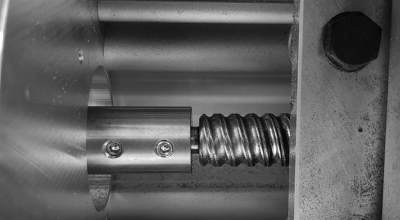Preamp design considerations
Decoupling capacitor selection
Some tech deep-dive background information about how I selected components for my preamp circuit board.
Why decoupling is needed
By decoupling, I specifically mean direct current (DC) decoupling in this case. The preamp needs to be decoupled both from the source (the musical instrument) and the sink (the power amplifier). This has multiple reasons:
- the supply voltages of the three partners may differ (e.g. 9V guitar phantom, 18V preamp, 52V power amp) and I don’t want to accidentally short-circuit one of them
- Output impedance, I mean the load capacity of the output stage might be limited. If I connect a low input resistance e.g. directly to a guitar’s pickup, I might not get any signal at all because the source is too weak to power it correctly.
- Noise reduction through electric coupling
Why capacitors can do the job
There are multiple ways of electrically decoupling circuits. You can use a photocoupler to totally (i.e. galvanically) separate two circuits from each other while only the signal is passed between the circuits, or - in my case - a capacitor to only let alternating currents pass, and to block constant current altogether.
How does this work?, you ask? Well, a capacitor acts a bit like a water tank. If you apply a constant voltage (pressure), the tank will flood to a certain degree. When this level is reached, there’s no flow (current) anymore, neither in nor out. But if you now vary the voltage around this static level (water pressure variation), you will measure some medium (current) flowing in and out of the tank again.
It’s the same with the capacitor. If you connect it in series to a sink, it will only pass current over when the input voltage level is changing.
Decoupling Capacitor type
Multilayer Ceramic, Polypropylene, Electrolytic…? After reading this guide from Texas Instruments, I understood this document is all about distortion. Distortion would hit the hardest on the instrument input before the preamp, because this will be amplified by both amp stages. When using an electrolytic capacitor, there should be a voltage bias applied to reduce distortion in the low frequency range. With my design, the bias voltage is 1/2 of VCC, so even higher than the 5V used in the guide - I think, I’ll be fine with a “cheap” polarized Aluminium cap on the THD+n side.
There’s another thing about MLCCs I noticed myself: With loudspeakers disconnected at high preamp gain, the power amps I’m using still play music! How’s that? The power amp board is using MLCCs which act like piezo actuators. Their vibration is amplified by the PCB they are mounted on which gives a proper sound level. Crazy. For more geeky details, have a look at EDN’s blog post or - again a Texas Instruments guide.
Capacitor size
To judge capacitor size, I had to take a couple of aspects into account:
- A bigger capacitor will lower my bottom end cutoff frequency
- A bigger capacitor will put more load on the input source due to charge losses
- A bigger capacitor will cost more, especially the high-quality ones.
- A bigger capacitor might have a larger footprint.
I wanted a lower cutoff of <20Hz for full HiFi capability. As that’s the -3dB point already, I chose it to be even lower at 15Hz calculated via \(f=\frac{1}{2 \pi RC}\). With an input impedance of 10kOhm (the value of the resistor clamping to virtual ground) I yield a target input capacitor size of 1µF.
With this capacitor, the input source will be considerably more affected by the 10kOhms input resistor than by the capacitor with its low series resistance (ESR) of some hundred mOhms, so the chosen value is fine.
For the output capacitor, the calculation is similar. The power stage has an input impedance of 20kOhm, so the lower cutoff frequency of 17Hz is reached wich a 0.47uF capacitor already. Anyways, to keep value differences at bay, I decided to go with the 1µF as well.



